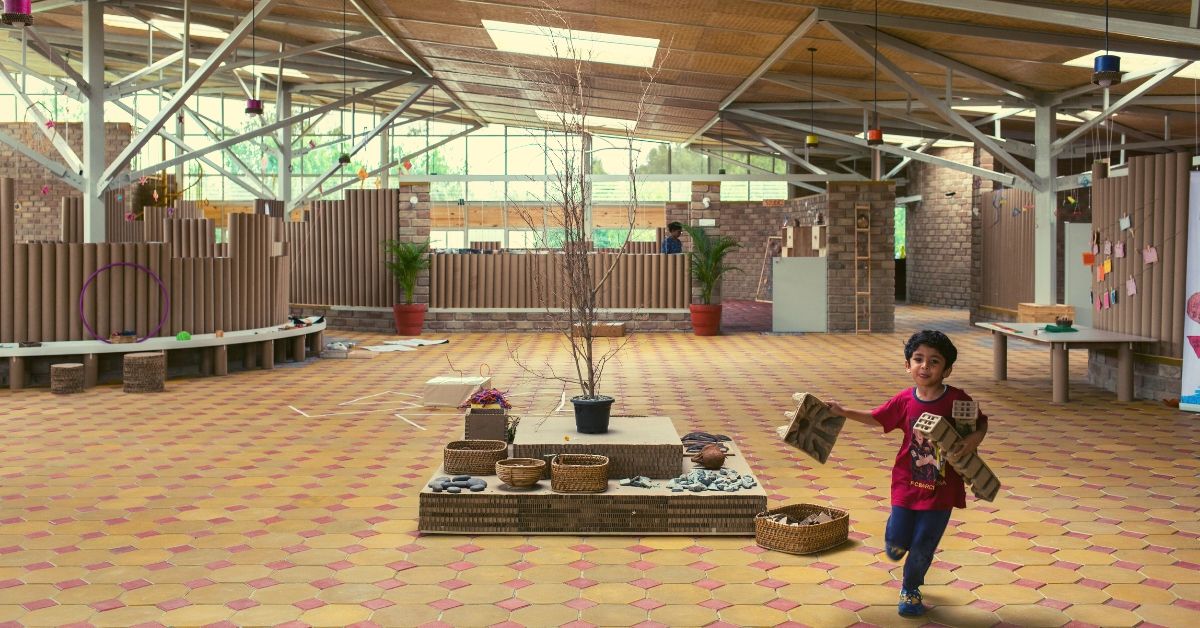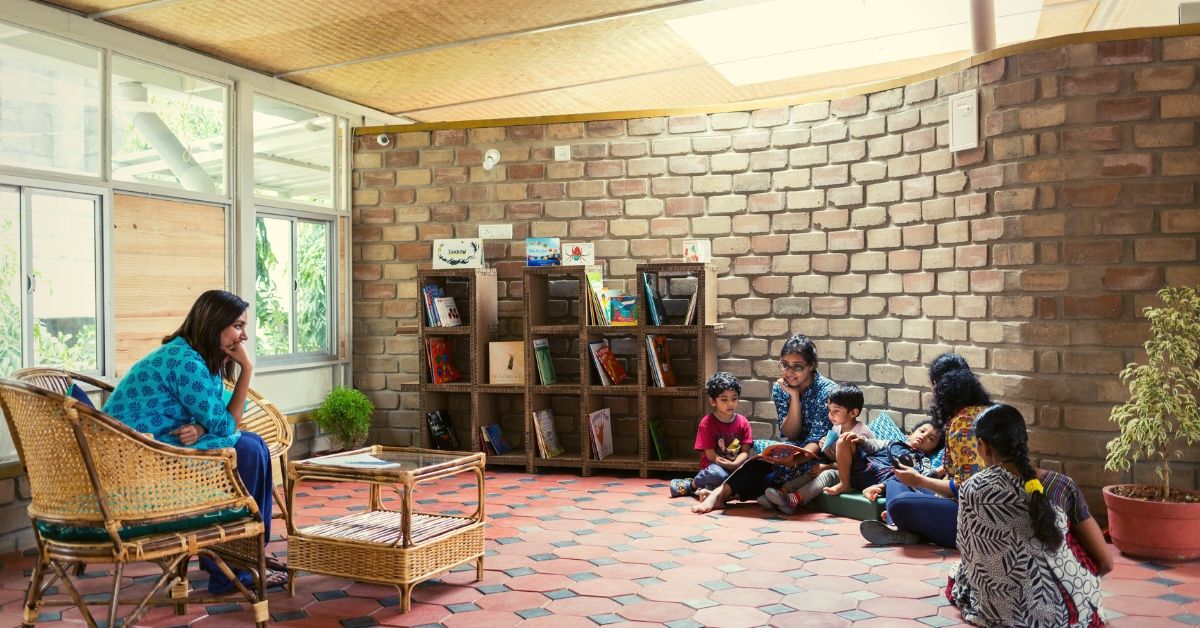In the post-World War II world, as Italy was trying to pick up the pieces, move past the devastation, and start afresh, a pedagogist named Loris Malaguzzi along with parents in the villages around Reggio Emilia, a city, came up with a novel approach that replaced the rigid curriculum of school education, with a flexible one.
This approach was based on respect, responsibility and community through exploration, discovery and play, with the understanding that each child carves their own path of learning with the help of these principles.
‘The Better Home’ brought to you by ‘The Better India’
We created ‘The Better Home’ because you shouldn’t have to choose between non-toxic ingredients and effective cleaning. Our cleaners are safe for babies, pets, skin and our oceans.
Explore our range of powerful, earth-friendly cleaners here.
This method is today known as the Reggio Emilia approach, and has been adopted by several schools, including Bengaluru-based pre-school — The Atelier — which was constructed by contractor Muralidhar Reddy and, architect Anurag Tamhankar and his team at Biome Environmental Solutions in a span of six months.

The design of the school was heavily inspired by the educational philosophy it was based on — unique, sustainable and celebrating creation, while understanding and adapting to change without destruction.
A School That Seeks To Enhance the Learning Experience
Biome was approached by Rythm Aggarwal, an educator, director and co-founder of The Atelier, for this project in 2016.
“The location of the site was in an area with constant construction activity. It is a rising concrete jungle, and we had to create a learning space for young children there, based on the inclusive learning approach. So we wanted to translate this flexible educational model in a design perspective while also focusing on sustainability,” begins Anurag.
From the design to the construction materials, the Biome design team only used items which could be easily brought apart, decomposed or upcycled, if required.
“Most buildings in the area are constantly being demolished and remade which puts a huge burden on the environment, making the permanence of a building irrelevant. But, we also chose to move away from that cycle and create a space that was as flexible as its curriculum. So, we built a school that could be easily dismantled and repurposed, instead of being demolished,” he adds.
Dismantle, Don’t Demolish
From the local chappadi granite stone slabs used for building the foundation, paver block flooring, paper tube partition walls to bolted steel roof support and bamboo mat false ceiling, the entire structure of The Atelier can be dismantled to either reuse, upcycle or organically decompose. This feature also allows the school to be easily relocated, if the need arises.
Talking about the design specifications, Anurag explains, “Each of the metal structures are bolted together, so that they can be easily dismantled and put back to its original form for reuse. The sloping roof is also made using these steel supports, Galvanized iron (GI) sheets and a false ceiling of bamboo mat plywood that provides for thermal and sound insulation. This structure was built keeping in mind the need for a warm, enclosed, safe and protective learning space, amid an urban locality with considerable level of noise pollution.”
Under the skylight-dotted roof, this school in accordance with the Reggio Emilia philosophy of complete democracy and zero hierarchy among students, parents and teachers, is built on just one ground level, covering a 10,000 sq ft of the total 15,000sft of land, which includes two playspaces, one indoor and another outdoor, and a cafe, in addition to the central learning space.
As community engagement is a prerequisite for the learning model, the café also serves as a point of convergence for the entire community. “It is a lot like a village or town chowk idea, where people can engage, interact and perform to enhance each other’s journey of learning,” adds Anurag.
Learning Under a Tree
This learning model encourages every child to discover the love of learning and embark on their own personalised journey of education. In other words, this model promotes exploratory learning, which requires a permeable interior design, says the architect.
“Like our philosophy, the space had to translate the flexibility and fluidity of change, and the ability to learn from the environment. Just like the learning experience, we wanted the physical space also to be real and rooted,” explains Rhythm.
It was this idea that inspired the team to create a structure that mimics the experience of learning under a tree. From the paper tube partition walls that vary in different heights to partially enclosed classrooms and common spaces, to the interconnected eight metal columns for roof support that imitate the branches of a tree and meet in a canopy-like arrangement at the central piazza, every single detail is designed to provide a close-to-the roots learning experience.
“The interiors and exteriors of The Atelier align to provide a down-to-earth rooted experience, much like that of learning under a tree. The branch-like metal columns that meet at the piazza, provide both a unique design element as well as bring down the building scale to that of the children, one they often can relate to with being under a tree,” he says.
Also to give a sense of openness, the external fabricated facade is made of a steel frame with panels of perforated metal sheet, reflective glass, pinewood, operable blinds and sliding windows, allowing for ventilation and ample natural light. Additionally, instead of bricks, they have used a sustainable alternative of Compressed Stabilized Earth Blocks (CSEBs) made of soil from different sites in the locality, that seamlessly blends into the entire ‘rooted’ design philosophy.
Consisting of a total of four classrooms, an atelier studio and a childhood simulation centre around the central piazza, the walls in this building much like their curriculum is ever-evolving and open to transition. Nothing here is concrete.
“It is a space that promotes and teaches the importance of respect especially for the environment. And so, in addition to the use of environmentally responsible construction materials, we have also installed a rainwater harvesting system with a capacity of 50,000 litres of water, and a water treatment system. Plus the waste water from the school is disposed of, in twin leach pits, as an effective way of enriching the soil,” explains Anurag.
With around 60 children and families within its fold, The Atelier is working towards redefining the level of education in India.
“Even after four years now, this space continues to inspire us every single day. The best part is to see how beautifully it adjusts to the needs of the children. It is like they belong here, and finally, feel free,” concludes Rhythm.
Pictures Courtesy: Biome Environmental Solutions
(Edited by Gayatri Mishra)
Like this story? Or have something to share?
Write to us: contact@thebetterindia.com
Connect with us on Facebook and Twitter
If you found our stories insightful, informative, or even just enjoyable, we invite you to consider making a voluntary payment to support the work we do at The Better India. Your contribution helps us continue producing quality content that educates, inspires, and drives positive change.
Choose one of the payment options below for your contribution-
By paying for the stories you value, you directly contribute to sustaining our efforts focused on making a difference in the world. Together, let's ensure that impactful stories continue to be told and shared, enriching lives and communities alike.
Thank you for your support. Here are some frequently asked questions you might find helpful to know why you are contributing?

